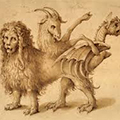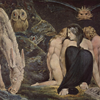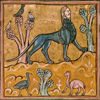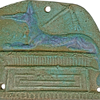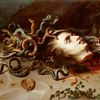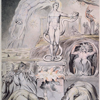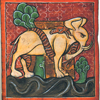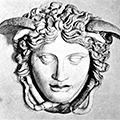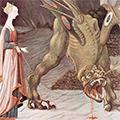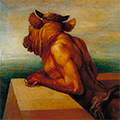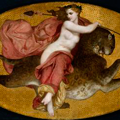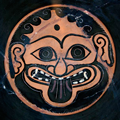Loreto Gómez López-Quiñones [*]
Abstract. The purpose of this essay is to show the concomitances between the Spanish writer Pedro Antonio de Alarcón and Edgar Allan Poe. Throughout this work, however, I will point out how many of these similarities represent different intentions in both writers. The interactions between Poe and Alarcón will be analyzed from seven different perspectives: 1) the transitional condition between Romanticism and Realism; 2) their conceptions of literary creation and rationality; 3) the special attention given to peculiar objects, which create a disturbing atmosphere in their stories; 4) the spiritual realm; 5) innovating and disturbing notions of space and time; 6) the use of narrators who claim empirical validity as eyewitnesses to make their stories appear as documentaries; and 7) the obsessive attention given to female characters, which paradoxically, is used to reinforce the masculine protagonists’ perspective. In Alarcón’s tales there are many concrete borrowings from Poe’s works. On the other hand, it will be shown how the main divergence between the two authors, consisting of Alarcón’s Catholic morality, underlies all these parallelisms.
Keywords: Pedro Antonio de Alarcón, Edgar Allan Poe, Romanticism, Realism
Resumen. En este ensayo nos proponemos mostrar las concomitancias entre el escritor español Pedro Antonio de Alarcón y el escritor norteamericano Edgar Allan Poe. A lo largo de este trabajo, señalaremos cómo muchas de estas similitudes representan diferentes intenciones en cada uno de estos autores. La interacciones entre Poe y Alarcón serán analizadas desde siete perspectivas diferentes: 1) la transición entre el Romanticismo y el Realismo; 2) sus diferentes conceptos de creación y razón; 3) la especial concentración en determinados objetos muy peculiares, que contribuyen a crear una atmósfera desasosegante; 4) la esfera de lo espirtual; 5) unas nociones de tiempo y espacio innovadoras a la vez que perturbadoras; 6) el uso de narradores que reivindican validez empírica como testigos para hacer sus historias más verosímiles; y 7) la obsesiva atención prestada a los personajes femeninos que, paradójicamente, se utilizarán para reforzar la perspectiva de los protagonsitas masculinos. Y si por una parte, en los cuentos de Alarcón, encontramos una fuerte influencia de la obra de Poe, por otra parte, pondremos de manifiesto cómo la principal diferencia entre los dos autores (la moral católica de Alarcón) subyace a cada uno de estos paralelismos.
Palabras clave: Pedro Antonio de Alarcon, Edgar Allan Poe, Romanticismo, Realismo, Catolicismo
Introduction
The purpose of this essay is to show the concomitances between the Spanish writer Pedro Antonio de Alarcón (1833-1891) and Edgar Allan Poe (1809-1849). Throughout this work, however, I will point out how many of these similarities represent different intentions in both writers. First of all, it is important to clarify that Alarcón knew Poe’s work very well. It has even been said that he was among the first to introduce Poe’s literature in Spain. Ángel del Río, a well-known historian of Spanish Literature, affirms that Alarcón “Fue el primer escritor de habla española que se ocupó de E. A. Poe” (186). According to del Río, Alarcón himself was especially interested in Poe’s conception of creation and the techniques he used to achieve his goals. Del Río also discusses Alarcón’s fascination with Poe’s short stories and how he was to incorporate Poe’s storytelling techniques in his own writing. Alarcón studied Poe’s works in detail and published numerous articles about his short stories. In 1858, Alarcón published his article “Edgar Poe. Carta a un amigo” where one can see the deep admiration the Spanish author felt for the American writer. Alarcón’s article is a necessary document to trace what he takes from Poe’s style. There also exist interesting resemblances, however, that are neither conscious nor explicit. Sometimes Alarcón, thinking he is following Poe’s style, tries to take a step away from Poe’s conception of creation by placing the morality of the story above literary technique. The process works in reverse as well. That is, when the Spanish writer tries to reaffirm himself and his Catholic beliefs, the literary techniques he borrows from Poe undermine this effort.
The interactions between Poe and Alarcón will be analyzed from seven different perspectives. 1) Beginning with the transitional condition of these authors, I will show how in each of them one can find characteristics of both Romanticism and Realism. 2) Then, I will compare their different conceptions of literary creation and rationality. 3) Both authors also give special attention to peculiar objects that create a disturbing atmosphere in their stories. 4) The spiritual realm, their perspective on life, death and supernatural events, is another aspect that will illustrate the similiarities and differences between these authors. 5) In relation to their spiritual concerns, I will show how these writers formulated innovating and disturbing notions of space and time. 6) In addition, the use of narrators who claim empirical validity as eyewitnesses, implies the authors’ manipulation of their readers and an attempt to make their stories appear as documentaries. 7) Finally, it will be pointed out how female characters receive an obsessive attention that, paradoxically, is used to reinforce the masculine protagonists’ perspective. It is through these elements that the appealing similarities between Poe and Alarcón will be shown. On the other hand, it will be shown how the main divergence between the two authors, consisting of Alarcón’s Catholic morality, underlies all these parallelisms.
The transitional condition: Romaticism or Realism?
One of the most obvious similarities between these authors is their transitional condition between two literary tendencies. Poe and Alarcón could be considered as figures in between Romanticism and Realism. Beginning with Poe and his tale “MS. Found in a Bottle”, one finds many Romantic elements such as the haunted ship, the enraged sea and, in general, the presence of supernatural events. These elements also appear in his tale “A Descent into the Maelström” in which the immensity of the Ocean and the mysteries of the Universe surround the characters. In addition, a constant device used by Romantic writers is the vision of ruins. At the end of his tale “The Fall of the House of Usher”, all of these strange, fantastic elements appear in the ruins of an aristocratic family and of their house: “my brain reeled as I saw the mighty walls rushing asunder —there was a long tumultuous shouting sound like the voice of a thousand waters— and the deep and dank tarn at my feet closed sullenly and silently over the fragments of the ‘House of Usher’” (Selected 78).
However, one can also see the presence of many realistic elements. In all of Poe’s tales there is a conflict between Positivist and Romantic ideas. Two possible character evolutions portray this conflict. Sometimes the protagonists affirm that they do not believe in the supernatural, and from the very beginning of the action they try to find a logical explanation for all the events happening around them. And yet, at the end they have to recognize the existence of supernatural or inexplicable events. Other times, the characters go through the opposite process. They overcome their irrational fears by finding a logical explanation for their doubts.
In the tale “The Purloined Letter,” there is an explanation for the polemic between poets and mathematicians, which symbolizes the tension between Romanticism and Positivism. Poe aims at a balance between rationality and irrationality, in particular through the character Dupin. Although a detective, Dupin’s methods of investigation are very different from standar police methods. While the police are very rational, detective Dupin goes beyond that rationality, and his solution turns out being a simpler one. His method, however, is also paradoxical; he used what has been called “controlled imagination”. Detective Dupont is a symbol of the rational power within human beings and, at the same time, he is able to enlighten the enigmatic events within everyday life.
One can see another example of this kind of paradox between the mathematical exactness and the irrationality in Poe’s murderers; while they act with great coldness and intelligent precision, they are, at the same time, mad. David Halliburton interprets these murderers as characters who undertake a conduct similar to that of God: “In his own eyes the pseudo-God is masterly, rational, omnipotent, a superior being who rises above the ordinary world and its denizens. But the reader, standing apart from him, sees him ironically. To us he is simply brutal, bizarre, or mad. We perceive furthermore, that such a being, for all his show, is in the grip of some force greater than himself” (137). In this way, Poe makes the reader reconsider the limits between madness and sanity. Since the narrator is also usually crossing those same limits, the reader never distingues between what is really happening and what is just a product of the protagonist’s imagination.
There is a similar tension within Alarcón’s narrative. He is also an author caught between Romanticism and Realism. On one hand, he could be classified as a Romantic writer. And yet, he is one of the first writers to introduce Realist narrations in Spain. One can see this tension throughout all his creations:
Alarcón, que atesoraba una indudable maestría para el relato, siempre arrastró el lastre de hacer resaltar lo pintoresco, lo antiguo. […] La incapacidad para abordar los traumas de sus contemporáneos paraliza su capacidad narrativa. […] Esto le impedía tener conciencia de su descubrimiento, el cuento realista; sólo se daría cuenta muchos años después. Lo había tenido delante y lo había estado mirando de reojo. No lo había visto. De ahí las indecisiones en su estilo (Rodríguez 121).
Although he rarely recognized himself as a Romantic, he often used Romantic devices such as tempests, fog, darkness (and other extreme manifestations of Nature), oriental decorations and fantastic journeys. He also had a tendency to place the setting of his stories in the distant past and rarely in his present era.
Alarcón inherited these motifs from Romanticism and, at the same time, he was anticipating some new elements from Realism. He shows some of the features of the new realistic ideology. For example, his characters do not belong to the upper classes and, through the dialogues, Alarcón offered a wide repertoire of local or regional speech, leaving behind the artificial language that characterized Romanticism. On the other hand, he could be classified a Romantic author. Alarcón has a tendency to revisit the past as a privileged time: “Sintió el drama de todo romántico, por bien avenido que estuviese con el tiempo en que le tocó vivir —y pocos lo estuvieron, o simularon no estarlo—: la experiencia profunda de que el presente no es possible sin la muerte de un pasado que nuestro anhelo nos hace parecer mejor, prestándole los más fascinadores prestigios” (Fernández Montesinos 194). However, at the end of his life Alarcón tried to separate himself from the Romantic ideal, in which he saw traces of an old fashioned and stagnant world. In this way, Alarcón was also trying to make clear that he did not agree with the heretical character that sometimes accompanies Romanticism. When Alarcón moved away from Romanticism, he reaffirmed his Catholic ideology.
A character that exemplifies very clearly this non-definition between Romanticism and Realism is the judge Joaquín Zarco, the protagonist of Alarcón’s “El clavo”. At the beginning he is presented as a lonely, melancholic and desperate man who has been damned by a fatal and Romantic destiny. As soon as he faces his moral duties, however, his Romantic side fades away. He has to choose between love and justice. As Laura de los Ríos says, “el personaje cobra un carácter moralista que mitiga, de cierto modo, su tonalidad romántica” (64). He ends up loosing any kind of Romantic “aura” to become a fair judge, a responsible father and a moral husband.
The Romantic ideology that underlies these devices is supportive of a specific conception of human beings as the center around which the Universe is organized. This involves an overdevelopment of the ego that conceives itself as a mighty strength that is being constrained by social conventions and artificial values. Therefore, this ego tries to overcome all the obstacles society puts in its way. In this kind of Romanticism, men constitute themselves as their own gods. The expansion of the ego could be considered as pagan pantheism. In this Romantic project, moral and social values are replaced by an amoral individualistic attitude. As for Alarcón, his Romanticism is more an aesthetic artifice than an ideological conviction. Catholic ideology weakens the transgressive potential of Alarcón’s Romanticism and turns it into an inoffensive and traditional tendency. He uses similar devices as Poe to create a disturbing atmosphere, but in the last analysis, morality prevails over any other aspect of his tales. His characters do not reach a complete state of religious independance. God is still the center of Alarcón’s universe, and Catholic social values end up being established anew. On the other hand, it is also interesting to observe how, in spite of his conservative ideas, the potential trangression of Romanticism provides Alarcón’s work with a complexity that brings it closer to Poe.
Literary creation and rationality
Lo extraño está basado en la ambigüedad de la interpretación que se puede dar a determinados acontecimientos representados en el cuento: son posibles, pero dudamos de cómo interpretarlos. […] sugerir un clima sobrenatural sin apartarse de la naturaleza, y su táctica es deformar la realidad en el magín de personajes neuróticos. Lo fantástico en cambio distingue muy netamente entre objetos llamémoslos imaginarios y objetos ficticios […] El narrador de lo fantástico no se acoge a las leyes de la lógica y del mundo físico y tampoco intenta explicar las situaciones que se van creando, por lo que trata con la misma naturalidad los acontecimientos prodigiosos de carácter extranatural que irrumpen en el marco diegético de la normalidad recreada (209).
His works can hardly be labeled as purely fantastic, and in so far as it falls into this category, its fantasticalness is a merely external one, if one may say so. […] Poe merely supposes the outward possibility of an unnatural event, though he always demonstrates logically that possibility and does it sometimes even with astounding skill; and this premise once granted, he in all the rest proceeds quite realistically. […] He chooses as a rule the most extravagant reality, places his hero in a most extraordinary outward or psychological situation, and, then, describes the inner state of that person with marvelous acumen and amazing realism (77-78).
Poe tried to awake the most irrational feelings and sensations. He also affirmed that for literary creation it was necessary to combine an analysis of empirical elements with the imagination of spiritual concepts. This balance between spirituality and materiality, between imagination and reality, irrationality and rationality, is one of Poe’s characteristics that interested Alarcón the most. In spite of this interest, the latter was not able to reach Poe’s complexity in the combination of fantastic elements with rational explanations. Poe’s “imagination” is a proud reaffirmation of the strength of human rationality whereas Alarcón’s “fantasy” is a humble recognition of the existence of a non-real space that escapes all human limits, and of a superior entity that in Alarcón’s Catholic ideology is represented by God.
Alarcón knew Poe’s theoretical texts very well and tried to reproduce all the elements he admired in Poe. Poe’s concept of literary creation focuses on the important role played by intelligence and technique. This does not imply that Poe used technique for the sake of technique. He subordinated these devices in order to create concrete meanings or to provoke concrete feelings within the reader. Alarcón affirmed that Poe’s intention was to exalt and disturb the reader’s state of mind, but also to conquer fantasy by using rational thinking to prove the impossible, extraordinary events and the supernatural.
In his theoretical texts, especially in “The Philosophy of Composition”, Poe wrote about the creation of an atmosphere. The main goal for both Poe and Alarcón was to provoke the reader’s emotions. From the very beginning of the tale, everything is aimed to create the final effect. Indeed, Alarcón said that the American writer “ve por intuición […] dónde nace y adónde va a morir cada sensación […] Alarcón pone de resalto en una literatura fantástica como la de Poe su muy consciente distancia ante la realidad más física, más cotidiana y subraya la meticulosa excitación de las sensaciones artísticas que conlleva esa lejanía mental” (Bonet 78). In order to create a feeling, both authors try to capture certain psychic emotions in their extreme manifestations, like terror, anguish or rage. To reach this, Poe thought it necessary to write with a great dose of coldness and without any kind of digressions. Everything must contribute to reinforce the final effect. Alarcón found inspiration in Poe’s topics and techniques to create these disturbing atmospheres. Poe tried to awaken readers’ emotions through the use of literary techniques. In this sense, one can see a sort of paradox between an irrational element (feelings, emotions and sensations) and a rational element (intelligence, strategies, techniques and coldness). On one hand, there is the image he offers to the reader: a mysterious background, an uncertain terror, but on the other hand, there is a very logical and organized structure. In this way, Poe is trying to make logical thinking and irrationality compatible.
Poe not only was a poet but also a lucid literary theorist. He tried to offer a rational explanation for the creative process and he tried to achieve objectivity within literary creation. One important difference between Poe and Alarcón lies within their abilities as critics and theorists. While Poe elaborated a lucid theory of poetry and artistic creation that changed old conceptions, Alarcón never showed enough consistency in his philosophical works: “el autor, que a menudo acierta como artista, falla siempre lamentablemente como pensador, pues su pensamiento, fluctuante según el estado emocional por que pasa, no es siempre coherente ni consecuente” (Fernández Montesinos 128-129). Moreover, some critics have been very skeptical about Poe’s influence on Alarcón. For example, Fernández Montesinos affirms: “El entusiasmo que Alarcón muestra por el cuentista americano no deja rastro alguno, me parece, en sus relatos, ni él era capaz de hacerse cargo de cuanto había de rigor, de severa disciplina, de decoro literario, en las narraciones que alababa” (186).
In spite of these discrepancies, one can see surprising coincidences between Poe and Alarcón. One of the more illustrative sources of Poe’s influence on Alarcón’s conception of literary creation and rationality is the relation between Poe’s tale “The Fall of the House of Usher” and Alarcón’s “La Comendadora”. Some of the more remarkable similarities appear in the plots of their tales. Both authors deal with the topic of the death of a familiy lineage and degradation through incest and psychological or physical illness. Alarcón deals with the same motif as in Poe’s story, using a very similar style and atmosphere. In these tales one sees the decomposition of an ancient aristocratic family condemned to an inevitable extinction. In Alarcón’s tale, the last descendant of the family, a little boy, is physically and psychologically sick and becomes obsessed with the incestuous desire of contemplating his aunt (who is a nun) completely naked: “¡Tía —continuó el niño, dirigiéndose a la Comendadora—, yo quiero verte desnuda!” (Cuentos 106). The child’s accomplished wishes begin a chain of events that ends in the whole family’s decomposition and death. In both tales, Alarcón and Poe show the destruction of the last hope of a lineage’s propagation. The last descendents of these lineages are people with very delicate and disturbed physical and psychological health. In Poe’s “The Fall of the House of Usher”, there exists this idea of a family’s physical and psychological weakness: “The stem of the Usher race, all time-honored as it was, had put forth, at no period, any enduring branch; in other words, that the entire family lay in the direct line of descent” (Selected 63). In both authors, the psychological degradation is accompanied by a physical corruption of the body, and the degeneration of an old family symbolizes a closed and claustrophobic environment where human relationships become harmful and mysterious.
Poe versus Alarcón: the spiritual realm
In relation to the balance between rationality and irrationality, it is important to see how these authors approach metaphysical topics. Although Poe does not focus on the existence of God or any other kind of supernatural superior creature, in some of his tales he makes some reference to religion. For example, he begins his tale “A Descent into the Maelström” with a quotation by Joseph Glanville: “The ways of God in Nature, as in Providence, are not as our ways; nor are the models that we frame in any way commensurate to the vastness, profundity, and unsearchableness of His works, which have a depth in them greater than the well of Democritus” (Tales 258). Poe’s spirituality is very different from Alarcón’s. While Alarcón is much more focused on Catholic and religious beliefs, Poe explores all different kinds of supernatural and irrational events without a prejudice. As Gilliam Brown affirms: “Humanity remains at the center of the cosmos, whatever happens. Poe’s cosmology presents a cosmos that mirrors humanity: an unlimited human legibility” (333). In this sense, Alarcón takes a step away from Poe when God remains at the center of the cosmos as a reference by which men can explain the mysteries of life. Alarcón’s characters can penetrate the unkown side of the Universe and of the human condition without taking any risks because God always remains as a solution. On the contrary, Poe’s characters go through endless experiences without even glimpsing the limits of the consequences.
Another spiritual obsession that Poe and Alarcón share is their concern about death. In relation to this topic Poe demonstrates a joyful attitude but, at the same time, a horrifying terror. He plays with hypnosis as a technique that is able to alter the concept of death, to manipulate and even to control it. For Alarcón, however, the only possible way of interrupting this natural process is through divine intervention, or through some kind of supernatural power, personified in a horrifying female figure. Both authors deal with death and all its manifestations. Poe deals with natural deaths, necrophilia, reincarnations, murders, and cataleptic attacks that make people appear as if they were dead. In many of his tales, characters have to face death through a dangerous psychological or physical situation. During this process, these characters experience a certain calm in the presence of death. One can find examples of this in his tales “MS. Found in a Bottle”, “A Descent into the Maelström” and “The Pit and the Pendulum”. Death is one of Poe’s obsessions, and presents itself in many different forms. One of the manifestations of death that appears with more frequency in Poe’s tales is the presence of corpses, of dead bodies.
This presence of corpses, taken to the extreme, leads to a necrophilical obsession. In Poe’s, as well as in Alarcón’s tales, corpses reach an independent and macabre state of life that gives them a protagonistic role within the tale. Alarcón participates in Poe’s morbid descriptions of corpses. In “El amigo de la muerte”:
También pudiera decirse que el doloroso júbilo con que se reconocieron Gil y Elena fue semejante al amargo placer con que el cadáver de un marido celoso (si los cadáveres sintiesen) sonreiría dentro de la tumba al oír abrir una noche la puerta del cementerio y comprender que era el cadáver de su esposa el que llevaban a enterrar… (Cuentos 150)
¡Yo no sé como abajo no sois amigos todos los hombres! La identidad de vuestras desgracias y debilidades, la necesidad que tenéis los unos de los otros, la brevedad de vuestra vida, el espectáculo de la grandeza infinita de los orbes y la comparación de éstos con vuestra pequeñez, todo debía uniros fraternalmente, como se unen los pasajeros de un buque amenazado de naufragar. […] Un mismo peligro los rodea…, y mi presencia los iguala a todos. Pues bien: ¿Qué es la Tierra, vista desde esta altura, sino un buque que se va a pique, una ciudad presa de la peste o del incendio? (168).
The investigation of the unknown involves a questioning of the limits between death and life. For Alarcón and Poe those limits are not completely clear. That is why in some of their narrations, the main characters go through experiences in which there is a transition between the two states. Once again, the most obvious of Alarcón’s examples is “El amigo de la muerte”. In this story, a suicidal is given the opportunity of, after dead, living a sort of dream in which he can accomplish all of his aspirations. However, he is not conscious of his situation. He does not know that he is already dead. Once all of his dreams have been achieved, death awakens him and tells him he has been dreaming. At this point, he knows he is dead but, at the same time, he is still alive and talking and feeling. In this way, one sees this character experiencing different kinds of “living” deaths. The difference, once again, would lie in Alarcón’s Catholic ideology. After having opened a great repertoire of possibilities, he ends up simplifying all of these complex topics by explaining them under a religious light: “-No vais a morir, porque nunca habéis vivido!… Al contrario; ¡vais a nacer a la vida del alma, que para vos será un sufrimiento eterno, como para los justos es una eterna bienaventuranza!” (Cuentos 145).
Alarcón shows a very positive conception of death as a way of reaching eternity, in a religious and in a non-religious sense: “El olvido está en la vida, Condesa, no en la muerte” (Cuentos 147). Alarcón inherits from Poe the obsession about the limits between life and death. Laura de los Ríos, in the introduction to her edition of Alarcón’s tales, points out some of Alarcón’s concerns: “El tránsito de la realidad, la de este mundo, al mundo de la muerte —que es vida— está llevado de manera magistral; nos parece que lo real es irreal, que lo imposible es posible, que lo soñado es vivido, y en ese equívoco entre el vivir y el morir, en ese filo, está la gran fuerza y modernidad del cuento de Alarcón” (311). Good examples of this unclear relation between life and death in Poe are the tales “Berenicë” and “Ligeia”. In the first, there is a premature burying of a woman. In the second, there is a reincarnation of Ligeia’s spirit in another woman’s dead body. One of the consequences of these unclear relations between life and death is the creation of an extremely dream-like atmosphere. In Alarcón and Poe’s tales, dreams serve as the transition between life and death and, in this way, relate to the spiritual realm. As Jonathan Elmer has pointed out, Poe’s tales (and one could add Alarcón’s tales) deal with different transitional states rather than with death itself:
His tales are not finally so much about the death of their characters as about those characters’ inability to die. All the live entombments, graverobbings, revenant wives, hopelessly mourning lovers, perversely confessional murderers, and communications from beyond annihilation —all these characteristic features of Poe’s tales and poems bespeak less a fear of the irrevocable termination of life than the correlative anxiety before the interminable nature of death (109).
Cantemos a los que tengan paciencia y perseverancia para sobrellevar las tribulaciones de la vida, no a los que huyen; no a los que desertan; no a los que dan a la humanidad el grito del pánico y de la derrota! No; no hagamos cien años después de Goethe y de Rousseau, la sacrílega apoteosis del sucidio. El suicidio pudo estar de moda, entre las gentes que viven la vida del alma, allá en los febriles días del romanticismo; pero hoy ha sido ya relegado al uso exclusivo de los comerciantes que quiebran, de los jugadores que pierden lo suyo y lo ajeno, de los ladrones de frac cogidos in fraganti, y de todos los que, para decirlo genéricamente, no viven otra vida que la de la materia, cuyo dispensador y regulador es el dinero (cited from Martínez Kleiser 147-148).
Space and Time
The relation between death and life, and the non-clear limits between them, involves a reevaluation of the conception of the time and space in which the action takes place. If the reality of life and human condition are to be doubted, then one needs to start from a different conception of time and space. In this regard, Laureano Bonet wrote a lucid essay on Alarcón’s treatment of space. According to Bonet, there are some similarities with Poe in his use of imaginary spaces that do not give an appearance of reality. In Alarcón, these spaces are sometimes so unreal that they allude directly to a metafictional space. Alarcón consciously aims at this artificiality, this theatrical effect in his own stories, to inflict the feeling of commotion upon the spectator: “La realidad urbana, por tanto, es absorbida por la artificiosidad cultural y el simulacro […] La narrativa alarconiana cuya verdad estética —que no documental— se haya agazapada entre los temblores expresivos y las sensaciones más convulsas” (Bonet 85).
Following this model, Alarcón’s narrative presents very dense and complex spaces that are “hondamente psicologizados —y reflejadores del juego de tensiones dramáticas entre los personajes” (Bonet 88). In Poe and Alarcón’s stories, the geographical distance, completely free from sociological references, creates a sense of an emotional isolation. In this kind of space, the narrator and the characters move nervously towards areas that become more and more mythical, deceptive and unbelievable:
el derramamiento del espacio narratorio por el propio cuerpo de los personajes, en comunicación metonímica abiertamente romántica y mediante una no menos poderosa deixis enunciadora: brotan así sucesivos ecos entre el entorno cósmico y el vivir subjetivo, lo que provocará un intenso patetismo (melo)dramático (Bonet 115).
In these tales, space is presented as a microcosm, as an isolated emptiness that intensifies the characters’ obsessive tensions and relationships. In Alarcón’s “La Comendadora”, the spatial decoration is austere and aristocratic. After setting the scene, he immediately describes the characters and creates a rarefied atmosphere. There are great similarities with Poe’s “The Fall of the House of Usher” where the space becomes a symbolic atemporal, entity that helps to create a horrifying atmosphere.
There is great symbolism in the use of weather elements like rain, storms, coldness, heat, and especially obscurity. The presence of the night is essential in Alarcón and Poe’s stories. The night serves to create an intimate atmosphere and to hide and disguise different aspects of reality. The night is also the time of dreams and unconsciousness. In Alarcón’s tales, one finds many obscure and deep places that along with the night are associated with death.
Closely related to space is the presence of cosmic travels, through which the authors reflect on cosmogony and world mysteries. Phenomenona such as the movement of planets, eclipses or magnetic strengths within Nature are also objects of these authors’ concerns. In many of Poe’s tales it is easy to find alternative universes (“Mesmeric Revelation”), spatial travels (“The Unparalleled Adventure of One Hans Pfaall”) and temporal travels (“Mellonta Taunta” whose title in Greek means “these things are in the future”). In some of Alarcón’s tales, one also finds these cosmic travels. “El amigo de la muerte” is possibly the best example. It is the story of a suicidal man who is taken on a fantastic, cosmic trip by Death: “nuestro hombre sentía lo que no ha sentido ningún otro hombre: ¡el doble movimiento de la Tierra alrededor del Sol y en torno de su propio eje!” (124); “El carro parecía vagar en el vacío, fuera de la atmósfera terrestre” (169). There are constant references to these cosmic spaces, which are manifestations of the terror provoked by Nature’s mysteries. In Poe’s “MS. Found in a Bottle”, the protagonist has to face these strange Phenomena: “our attention was again arrested by the appearance of the sun. It gave out no light, properly so called, but a dull and sullen glow without reflection, as if all its rays were polarized. Just before sinking within the turgid sea, its central fires suddenly went out, as if hurriedly extinguished by some unaccountable power” (Selected 11). Félix Martín explains the implications of the use of this kind of space in Poe’s tales:
Su autor nos traslada hasta regiones polares —mar del sur, polo sur o costa de Noruega— concebidos como límites absolutos de la exploración y del conocimiento humanos. La entrada en estas regiones que descienden hasta el centro de la tierra a través de las cataratas y vórtices gigantescos conduce al narrador a conocimientos secretos cuya revelación implica su propia muerte (57).
These physical travels are also symbolic travels to the unknown and mysterious regions, but also to the dark side of human beings. They show their concerns about the cosmic mysteries within Nature. In relation to these mysteries, possibly Alarcón’s clearest example is “El amigo de la Muerte”: “Un sordo ruido, como el que precede al terremoto, resonó debajo de la tierra. Alzóse luego alrededor de los dos amigos un vapor ceniciento, entre cuya niebla apareció una especie de carro de marfil por el estilo de los que vemos en los bajorelieves de la antigüedad pagana” (166). These mysteries present themselves by means of ominous natural catastrophes like earthquakes, floods, storms or eclipses: “A medida que avanzaban hacia Oriente la oscuridad era más densa, el reposo de las ciudades más profundo, mayor el silencio de la Naturaleza. La luna huía hacia el ocaso como una paloma asustada, mientras que las estrellas cambiaban de lugar en el cielo como un ejército de dispersión” (167). In this way, the action is taken out of a realistic atmosphere providing it with a completely “fantastic” tone that makes any kind of potential criticism harmless and unrelated to the real world.
Not only space but also time receives very special treatment in Alarcón and Poe’s tales. At some point in the stories, time seems to be frozen, especially during cosmic trips or transitional periods between life and death. In “El amigo de la muerte”, Death takes the protagonist on a cosmic trip, so that his perception of time suffers a complete alteration: “Diríase que en aquel punto el tiempo se había parado; […] Diríase también que en aquel momento terminaba un período de la historia del mundo” (155). Time is sometimes stopped, sped up, slowed down, or even made to go backward: “Te llevaré a ver el sol aunque retrocedamos para ello. Así verás el curiosísimo espectáculo del tiempo al revés” (Cuentos 169). The most reknown Spanish critic during the nineteeth century, Juan Valera, wrote in a letter to Alarcón the following reflection on time: “En el espíritu que contempla, y que por participación tiene algo de divino, no hay pasado: todo está presente. Nosotros vivimos ahora y vivimos en todos los siglos” (cited from Romano 190).
As for Poe, one finds the same cosmic treatment of time. In “MS. Found in a Bottle”, the protagonist affirms: “We are surely doomed to hover continually upon the brink of eternity, without taking a final plunge into the abyss” (15). This temporal emptiness has a lot to do with spatial emptiness, and with the new cosmogony Alarcón and Poe attempt to create. “The metaphysical voyager faces an open-ended time, a future he cannot know because it has never been. […] they face a future that is also, strangely, the past, for they can only become, in a manner of seeking, what they already were. Prisoners of time, they are equally prisoners of space” (Halliburton 135).
Narrators
Time leads to another main constitutive element of the short stories: the narrator. Their stories are primarily written in first person. In both authors’ short stories, the narrator usually gives the reader an introduction in which he affirms his presence in the action as a witness and tells how he found out about the story and justifies his point of view. Through his presence as an eyewitness, the narrator tries to give empirical validity to the outrageous events. The techniques he uses to portray these narrator’s interventions are: a dialogue, a monologue, or even a story within a story. Alarcón pursued objectivity from the narrator’s point of view as the eyewitness of the narrated events, or somehow presented figure as a depositary of the story that is going to be told: a legend, a tale, a popular romance, etc. This helps to create the feeling of objectivity and verisimilitude. In Alarcón’s tales there is “un empeño de dar al relato aires de ‘cuento contado por alguien’ ” (Fernández Montesinos 33). Poe uses the same kind of metafictional device; in his tales, there is always a character that tells a story within the narrator’s tale. In the stories of both authors, it is common, therefore, to find more than one narrator. Brigitte Leguen, in her essay on the narrative structures of Alarcón’s short stories, points out how the narrator always tries to give the story as much credibility as he can by saying he has seen, heard or even experienced what he is going to tell us. The narrator is very aware of the reader’s possible incredulity, but he always insists on his narration’s authenticity by trying to justify all of his tales’ sources. Alarcón insists on the authenticity of the events narrated even in his most fantastic and supernatural tales. In “Historia de mis libros”, Alarcón affirms about one of his tales: “En ‘La mujer alta’, desde la primera letra del relato hasta el final del segundo encuentro de Telesforo con la terrible vieja, no se refiere ni un sólo pormenor que no sea la propia realidad. Lo atestiguo con todo el pavor que puede sentir el alma humana!” (Obras completas 10). Alarcón tries to make the tale appear as a documentary text. To reinforce that intention, he talks about the fear he feels when he thinks that this “improbable” story is based on reality. Through this device, Alarcón’s intention is to provide his story with a deeper expressive effect. Poe also uses this device of affirming that his narration is a real event. Both authors are aiming at a common intention, which is to intensify the terror and make the reader feel overwhelmed by the nature of the events going on.
Nevertheless, there is a certain moral inclination in Alarcón. He does not dare to take a step away from a moral ideology that conceives literature as an art that transmits truths and moral allegories. On the other hand, Poe completely overcomes this classic concept of art. Félix Martín, in the introduction of his edition of Poe’s tales, points out this revolutionary potential in Poe’s narrative: “Si la norma literaria emanaba de los hechos, de los acontecimientos actuales y de su ‘verdad moral’, la excepción pertenecía a la imaginación; y el arte narrativo que viviera de ella amenazaría seriamente el orden social, político, psicológico y moral de la sociedad norteamericana” (73).
Paradoxically, Poe insists with irony in his stories’ authenticity. In “MS. Found in a Bottle”, the narrator affirms, “I have thought proper to premise thus much, lest the incredible tale I have to tell should be considered rather the raving of a crude imagination, than the positive experience of a mind to which the reveries of fancy have been a dead letter and a nullity” (Selected 8). A way in which Poe insists on the verisimilitude of his stories is by showing from the very beginning of the tale a hesitant attitude about the reader’s credulity. He opens his tale “The Black Cat” with the following sentence: “For the most wild, yet most homely narrative which I am about to pen, I neither expect nor solicit belief” (Selected 191). In his tale “La mujer alta”, Alarcón’s narrator also tries to show their own incredulity to prevent that of the reader:
Por fortuna o desgracia mía, soy, digámoslo así, un hombre a la moderna, nada supersticioso, y tan positivista como el que más, […] Pues bien, a propósito de fenómenos sobrenaturales o extranaturales, oíd lo que yo he oído y ved lo que yo he visto […] y decidme en seguida qué explicación terrestre, física, natural, o como queramos llamarla, puede darse a tan maravilloso acontecimiento (La Comendadora 188).
Female Characters
Another aspect common to both Poe and Alarcón is the presence of mysterious characters of non-clear existence that seem to objectify the fears of human beings. Most of the time, these characters are women. There is also (in both authors) a big difference between the way masculine and feminine characters are defined. Males are active, sometimes even aggressive and provoking. They move the action forward, and they are always the narrators. Even when women seem to be the protagonists of the tales, male characters manage to lead the voice of the narration. “The tales about women, ‘Morella’, ‘Ligeia’, ‘Berenicë’, ‘The Fall of the House of Usher’, and ‘Eleonora’, are about men who narrate the unspeakable remembrance” (Dayan 184).
Alarcón and Poe’s feminine characters are not as developed as their masculine characters. The female figure may symbolize the transgression of a natural order. Very often, they also offer a double personality or identity. Female characters tend to be young and extremely beautiful, and yet this beauty is a source of disturbing reactions and suffering for men. This reveals a certain misogyny in these authors’ tales. According to Gillian Brown, one of the manifestations of this misogynist attitude is his manipulation of women’s dead bodies: “This misogyny in Poe’s representation of women consists less in his death plots than in his revivification of women in service to the history of consciousness” (341).
Women seem to be there as blank screens in which men can project their own psychology. Therefore, Poe finds in dead bodies the perfect passive instrument for men’s experimentations. This connects a common device used by Romantic writers with a constant obsession in Poe’s works: the death of young and beautiful women:
‘The death … of a beautiful woman is, unquestionably, the most poetical topic in the world’ (Poe 1984a, 19). Poe took seriously his own critical dictum: all the Lenores, Ligeias, Morellas, Berenicës, and Madeleine Ushers attest to his fascination with the more or less protracted dissolution of beloved women. In this fascination, however, Poe was by no means alone, for if, as Nina Baym has suggested, sentimental literature eschewed the narrative of seduction in the second quarter of the nineteenth century, it nevertheless manifested an increasing, even obsessional, interest in the spectacle of the death of innocent victims (Elmer 108).
In male characters, one also sees an obsession with the female figure. The obsession goes so far as to make men follow these women even beyond death. In “El amigo de la Muerte”, Gil, the protagonist, meets his beloved Elena after he dies: “Allí estaban, embebidos en su mutua contemplación; avaros de su misma dicha; con la copa de la felicidad en la mano; sin atreverse a llevar los labios a ella, temerosos de que todo fuera un sueño, o no codiciando mayor ventura por miedo de perder la que ya sentían…” (156). On the other hand, these feminine characters seem to move in a special undefined territory between life and death. This is very clear by the way the author describes them. In the same tale by Alarcón it is stated, “Dijérase que Elena era de mármol” (157). José Fernández Montesinos has described this morbid obsession as “la ilusión romántica del amor eterno, hilo que guía por todos los laberintos del mundo, amor que pervive en la Eternidad, que redime y beatifica” (111). In “Berenicë”, Poe describes the female protagonist in the following way: “not as the living and breathing Berenicë, but as the Berenicë of a dream; not as a being of the earth, earthy, but as the abstraction of such a being” (Selected 22).
Thus, in these authors’ tales, the female figure appears as a consistently disturbing presence that has a terrifying effect on the male protagonist. Though this female figure is not a real nor completely living entity, the fact that the reader sees her physical presence reinforces her ambiguous and horrifying role in these narrations. This is evident in Alarcón’s “La mujer alta” wherein the male protagonist is terrified by the idea of meeting a solitary woman in the streets at night. This is an image that has pursued him since his childhood. One sees in this figure a symbol of men’s psychotic and compulsive fears. This irrational fear becomes a reality in the shape of a frightening and repulsive woman, such is the case in Poe’s “Berenicë” where the physical degeneration of the female character embodies the fear of the male characters, while at the same time the readers experience this same uneasiness.
The Presence of Objects
Protagonistas o suscitadores de la acción unas veces, resortes evocadores otras, símbolos también en ocasiones, estos pequeños seres componen un vasto muestrario, con el interés adicional que les otorga su carácter de testimonio de una época en que la afición por lo menudo, el gusto por el detalle, se hacen patentes en muchos aspectos de la actividad social: viviendas atestadas, en aras de la moda, de deliciosos objetos inútiles […] toda una colección de objetos encantadoramente breves. Tampoco la literatura es ajena a esas tendencias y será el género narrativo más breve, el del cuento, reflejo con frecuencia de la nueva sensibilidad (Royo 88-89).
Some of the objects one finds in Alarcón’s tales are: a table in “Historia de cinco historias”, a clock in “Dos retratos”, and letters in “Los ojos negros” and “La Comendadora”. In his tale, “El extranjero”, there is an object that plays a decisive role. This object is a medallion that belonged to a Russian soldier who was cruelly assassinated by a Spanish soldier. He stole the medallion and by an accumulation of circumstances, this Spanish soldier ends up, without knowing it, in his victim’s house. There, his victim’s sisters and mother recognize the medallion and furiously accomplish their revenge by killing him. This object is a connection that puts together two different geographies, historical events, characters, times and stories.
In relation to objects, it is easy to find Poe’s influences on Alarcón. In Poe’s “The Gold Bug”, there is a mysterious adventure about the search for a treasure around a skull impaled by a nail. Alarcón repeats this exact motif in his tale called “El clavo” (“The Nail”), in which a judge, while walking through a cemetery, finds a skull impaled by a nail, and in this way, he begins to investigate an unpunished crime. If one takes into consideration the dates in which both tales were published, “El clavo” (1881), “The Gold Bug” (1843), and is aware of the fact that Alarcón knew Poe’s works very well and felt a deep admiration for them, it is very difficult not to think about a direct borrowing or appropiation of Poe’s techniques and motifs.
In both authors there is a fetichist obsession with objects that turns them into symbols of emotional and psychological conditions, creating a strong link between internal states and the physicality of the things around us:
En estas historias de espantosa crueldad y culpabilidad preciso es recrear la minuciosa dependencia de los objetos físicos y del mundo de los sentidos. […] la externalización de las reacciones psíquicas en el mundo de los objetos acabaría convirtiendo a éstos en símbolos y emblemas de aquella actividad que ocupa el centro de interés narrativo: la de la vida psíquica, la de la conciencia y la mente. Como advierte Edmund H. Davidson, Poe demostró que los estados de conciencia no son solamente condiciones aisladas de la locura, sino que parecen íntima e inextricablemente relacionados con el mundo físico que los rodea (Royo 94-95).
Although the importance of objects in Alarcón and Poe’s literature has been pointed out, spaces in their stories are not described in detail through objects. However, they succeed in creating a terrifying atmosphere. The scenery in Alarcón and Poe is not based on the description of objects, but on the sensorial, emotional and imaginary resonances they awaken in the reader. Objects become symbolic entities: “Los objetos pueden estar en el texto literario por su valor testimonial óntico, es decir, porque simplemente son, o por su valor sémico, es decir como realidades que representan a otras realidades o a conceptos, como signos. Esta segunda opción es la que domina el texto alarconiano” (Leguen 263). This prevalence of objects has a paradoxical effect. On one hand, it situates the action within a realistic and detailed environment and, therefore, it makes the story more realistic. On the other hand, there is almost a personification of these objects that play a symbolic role, and this makes the stories closer to fantastic literature. Either way, this works in different manners in the two authors. While Poe creates a disturbing and subversive atmosphere making mystery arise within realistic objects, Alarcón, following the conventions of fantastic literature, uses them in a more traditional way.
Through the intensive use of objects these authors accomplish a subversive destruction of our conception of reality. Alarcón and Poe make the reader doubt his own reality. They weaken the borders between fantasy and reality, between imagination and rationality, and between magic and science. In the middle of a reality inhabited by real people, these authors tell a story that does not fit within a human being’s concept of what is a possible, logical or real event. In this way, readers are forced to mistrust the natural entity of the characters and the environment surrounding them that is called reality.
Conclusions
After this analysis of the main elements that Poe and Alarcón have in common, one sees many different ways of looking at this relation. First of all, in Alarcón’s tales there are many concrete borrowings from Poe’s works. In the Spanish writer, there is also a will for adopting Poe’s philosophy about literary creation. There are many similarites that exemplify this nearness. Both authors’ main goal is to create an atmosphere that disturbs their readers and to awaken emotions within them. Moreover, both authors are located in the transition between Romanticism and Realism. They use the most typical of Romantic devices but, at the same time, these devices are transferred in their texts by their combinations with realist elements. Romantic ideology still underlies them but the main purpose for the use of these devices is to create a specific atmosphere that serves as a backdrop to rational inquiry. There is also a strong presence of rationality that announces the Realist philosophy. Within this tension between Realism and Romanticism, the narrator plays a very important role insisting on the authenticity of his stories. A main concern in these authors’ works is an investigation into the spiritual side of life, the limits between death and life and the mysteries beyond terrestrial life. As a consequence, one sees the creation of a new cosmic space and time.
On the other hand, there is one main difference between these two authors that is evident in Alarcón’s morality and his identification with Catholicism. While the moral lesson is never found in Poe’s literature, on many different occasions, Alarcón insisted on his works’ moral purpose: “Siempre me he complacido en deducir útiles enseñanzas y provechosas consecuencias de mis narraciones” (Martínez Kleiser 40). Alarcón’s stories show the fatal destiny of a character whose immoral behavior is punished as an exemplary case. Readers cannot but notice how evil is punished and goodness is awarded. The most obvious differences between the two authors are the direct consequence of Alarcón’s Catholicism. First of all, Alarcón’s inistence on fantasy constrasts with Poe’s imagination. Poe’s stories show extraordinary events within a realistic context. Poe does not accept the unexplicable if it has not been filtered by human rationality. As for Alarcón, he imposes the fantastic event on readers as an actual reality and as truth. This humble acceptance of the supernatural illustrates Alarcón’s acceptance of a superior being (God) that governs over human beings’ lives.
In spite of Alarcón’s interest in Poe’s theoretical texts, these authors have a different conception of art and, especially, of literary creation. For Alarcón, literature is a way of transmiting or creating truths and moralizing. On the other hand, Poe believes in the independence of art from reality and in the non-moral character of it. His main goal is to provoke readers’ emotion without worrying about their morality. Alarcón takes a step away from Romanticism by focusing on Christian and social values while Poe’s works are socially and morally transgressive. In Alarcón’s universe, God remains in the center and moral values are established anew. In Poe’s universe, men try to become gods. In relation to God and religion, it is not surprising that Alarcón’s conception of death is that of an encounter with real life (a better life) that can only be altered by God. On the contrary, Poe views death as a horrifying and fascinating event that offers men the possibility of experiencing and researching the mysteries of the universe. Men are able to manipulate the limits between life and death and achive a deeper knowledge.
Alarcón consciously insists on the moral character of his literature. He tries to keep a balance between his fascination for Poe and the Catholic dogma. On the other hand, he is also conscious of the fact that by doing so, he is taking a step away from Poe. Paradoxically, at times, when he is trying to moralize, Poe’s influence arises in an unconscious way and Alarcón’s texts end up dealing with the dark side of human beings just for the sake of exploring, leaving behind any kind of religious prejudice. As Montes affirms: “el verdadero conocimiento de Pedro Antonio de Alarcón, como escritor, se alcanza al colocar sus aciertos narrativos en primer lugar, y dejar su ideología en un segundo término. Al fin y al cabo, al escritor guadijeño se le leyó en su momento, y se le sigue leyendo en la actualidad, por su capacidad de emocionar, de atraer, de satisfacer a un amplio número de lectores” (42). Trying to be loyal to his moral principles, when Alarcón has the intuition that he is going too far in his imaginative tales, he adopts an apologetic attitude. In the prologue on his “Cuentos amatorios”, he affirms: “Por lo que respecta al fondo, creo haber sido más consecuente con la moral que ningún narrador de historias de este linaje” (Cuentos 33). Nonetheless, his literary influences and his author’s intuition betray him. Some of his tales show a very morbid carnality and sensuality as well as an obscure conception of human being’s desires. As much as Alarcón tries to justify himself, the amoral modernity of some of his stories reveals his nearness to Poe’s creations. Although he emphasized his moral purposes, his main goal was to entertain and disturb.
Bibliography
Alarcón, Pedro Antonio de. Cuentos y novelas cortas. Ed. Ángel Basanta Folgueira. Barcelona: Plaza & Janes, 1984. [cited as: Cuentos]
______. La Comendadora, El clavo y otros cuentos. Ed. Laura de los Ríos. Madrid: Cátedra, 1998.
______. Obras Completas. Madrid: Aguilar, 1974.
Bonet, Laureano. “Espacios físicos y espacios mentales en la narrativa corta de Alarcón”. En torno a Pedro Antonio de Alarcón. Ed. Fernando García Lara. Granada: Diputación Provincial de Granada, 1993. 77-118.
Brown, Gillian. “The Poetics of Extinction”. The American Face of Edgar Allan Poe. Ed. Shawn Rosenheim and Stephen Rachman. Baltimore: The Johns Hopkins UP, 1995. 330-344.
Dayan, Joan. “Amorous Bondage. Poe, Ladies, and Slaves”. The American Face of Edgar Allan Poe. Ed. Shawn Rosenheim and Stephen Rachman. Baltimore: The Johns Hopkins UP, 1995. 179-209.
Dostoevski, Fyodor M. “Three tales of Edgar Allan Poe”. Critical Essays on Edgar Allan Poe. Ed. Eric W. Carlson. Boston: G. K. Hall & Co., 1987. 77-79.
Elmer, Jonathan. “Terminate or Liquidate?. Poe, Sensationalism, and the Sentimental Tradition”. The American Face of Edgar Allan Poe. Ed. Shawn Rosenheim and Stephen Rachman. Baltimore: The Johns Hopkins UP, 1995. 91-120.
Fernández Montesinos, José. Pedro Antonio de Alarcón. Madrid: Castalia, 1977.
Halliburton, David. “The Tales”. Critical Essays on Edgar Allan Poe. Ed. Eric W. Carlson. Boston: G. K. Hall & Co., 1987. 133-138.
Leguen, Brigitte. Estructuras narrativas en los cuentos de Alarcón. Madrid: Universidad Nacional de Educación a Distancia, 1988.
Martín, Félix. Introducción. Relatos. By Edgar Allan Poe. Madrid: Cátedra, 1944. 9-110.
Martínez Kleiser, Luis. D.Pedro Antonio de Alarcón. Un viaje por el interior de su alma y a lo largo de su vida. Madrid: Suarez, 1943.
Montes Bordajandi. “Alarcón y la crítica (El arte narrativo)”. Proceedings of the I Centenario de la muerte de Pedro Antonio de Alarcón (1891-1991). Ed. Manuel Espinar Moreno. Guadix: Ayuntamiento de Guadix. Caja General de Ahorros de Granada, 1991. 31-51.
Poe, Edgar Allan. Tales of Edgar Allan Poe. Ed. Hervey Allen. New York: Random House of Canada, 1944. [cited as: Tales]
______. Selected Tales. Ed. Julian Symons. New York: Oxford UP, 1980. [cited as: Selected]
______. “The Philosophy of Composition”. Edgar Allan Poe’s Works. Vol.XIV. Ed. James A. Harrison. New York: AMS Press Inc., 1965. 193-208.
Río del, Ángel. Historia de la literatura española. Vol. II. New York: Rinehart and Winston, 1963.
Ríos de los, Laura. Introducción. La Comendadora, El clavo y otros cuentos. By Pedro Antonio de Alarcón. Madrid: Cátedra, 1998. 11-102.
Rodriguez Gómez, Antonio. “Algunos artículos inéditos de Pedro Antonio de Alarcón”. Proceedings of the I Centenario de la muerte de Pedro Antonio de Alarcón (1891-1991). Ed. Manuel Espinar Moreno. Guadix: Excmo. Ayuntamiento de Guadix. Caja General de Ahorros de Granada, 1991. 113-121.
Romano, Julio. Pedro Antonio de Alarcón. El novelista romántico. Madrid: Espasa-Calpe, 1933.
Royo Latorre, María Dolores. Pedro Antonio de Alarcón: La composición del relato. Teruel: Colegio Universitario de Teruel, 1992.
[*] Licenciada en Filología Hispánica (1997) y Literatura Comparada (1999) en la Universidad de Granada. Máster en Liberal Arts por la Colorado State University (2001). Doctora por la Universidad de Granada con una Tesis sobre Literatura y Cine (2003).
Contacto con el autor: loretocolorado@yahoo.es



